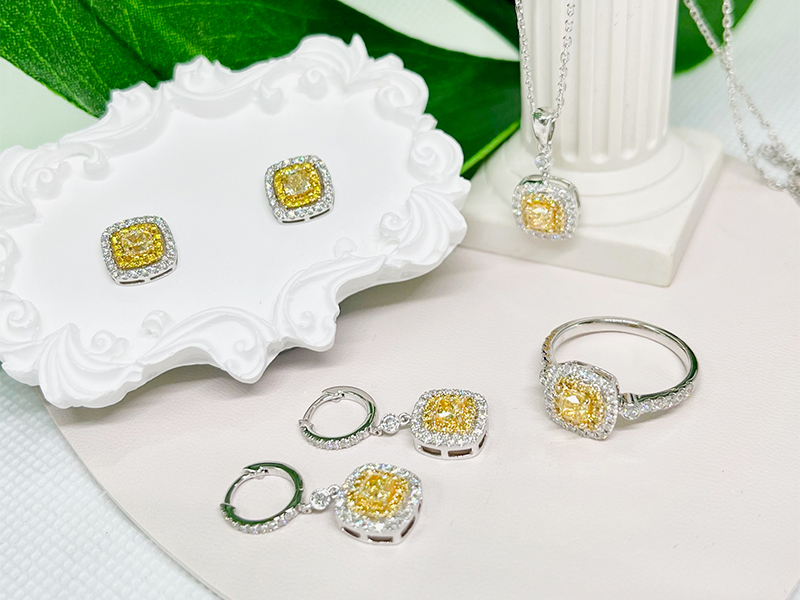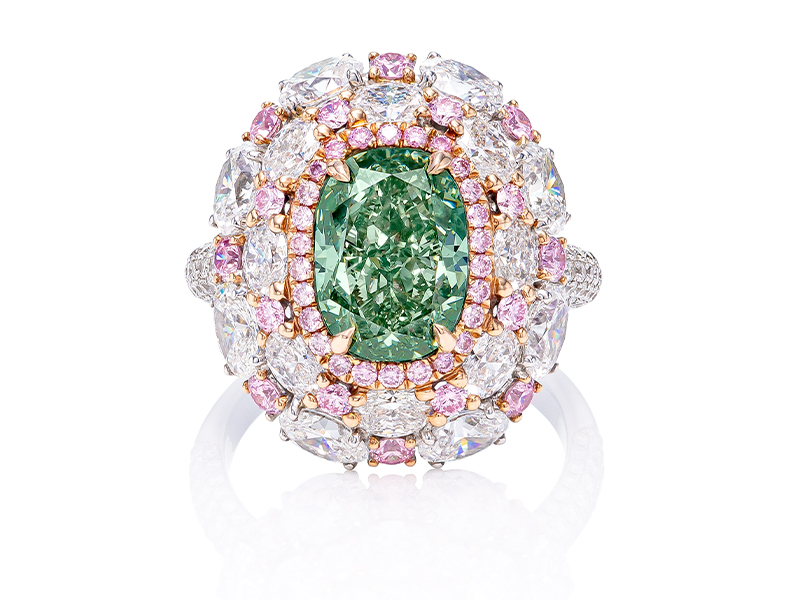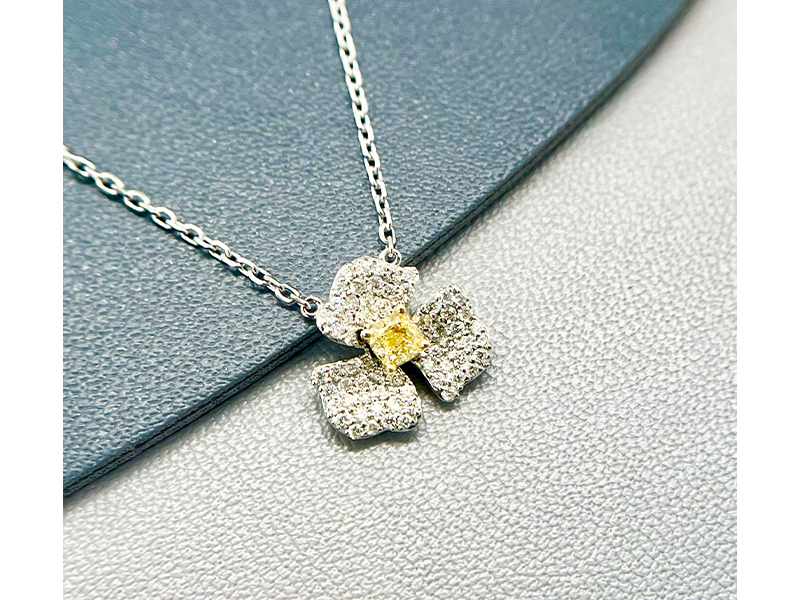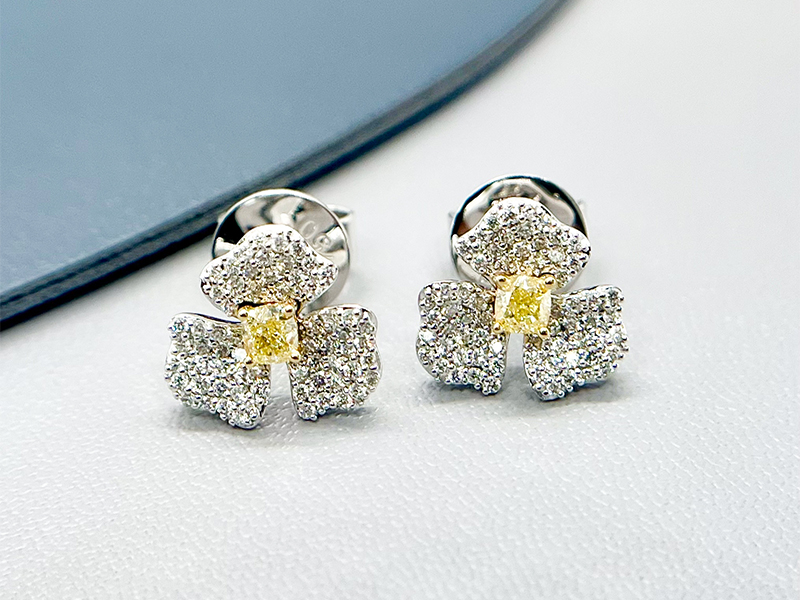Is it finally time for coloured diamonds to take centre stage? Here, jewellery designer AARTI SONAWALA, the founder of ART N ASH, opens up all about them – from canary yellow diamonds to vivid pink diamonds – and how they have inspired her.
Ever since I began my journey as a jewellery designer, fancy coloured diamonds have held a special place in my heart. These dazzling gems, with their unique hues and mesmerising brilliance, have been a constant source of inspiration for my creations.
To me, coloured diamonds are like nature’s own palette of paints, each one possessing a story and character that sets it apart. When I work with these gems, I feel a sense of excitement and wonder. They challenge me to think creatively and push the boundaries of traditional design!

The rarity factor of coloured diamonds
The rarity of fancy coloured diamonds is one of their most fascinating aspects. Of all diamonds mined, only about 1 in 10,000 displays any colour, making natural fancy colour diamonds exceptionally rare. Each colour, whether vivid pink, canary yellow or enchanting green, is the result of unique geological conditions. Some of the rarest ones include:
- Red diamonds: The rarest of all, with only a handful of stones known to exist.
- Blue diamonds: Famous for their stunning colour (which comes from traces of boron) and their association with the Hope Diamond.
- Pink diamonds: Highly sought after, with Australia’s Argyle mine being the most famous source until its closure in 2020.
- Green diamonds: These diamonds obtain their colour from exposure to natural radiation during formation.
What determines their value?
One must bear in mind that coloured diamonds can be significantly more expensive than white diamonds, but this largely depends on the rarity and intensity of their colour. Natural fancy colour diamonds – especially rare hues like blue, pink, or red – can fetch prices much higher than even the finest colourless diamonds. For instance, the legendary Pink Star, a 59.60-carat vivid pink diamond, sold for a record-breaking US$71.2 million. The value of a coloured diamond is determined by three primary factors:
- Colour intensity: The richer and more vibrant the colour, the more valuable the diamond.
- Rarity of the colour: Colours like red and blue are incredibly rare and therefore command higher prices.
- Carat size: Larger diamonds with strong, pure hues can exponentially increase in value.
My most memorable creations
Among my most special creations as a jewellery designer using coloured diamonds are two pieces that have particularly stayed with me. One was an engagement ring featuring a rare blue diamond surrounded by a pink diamond halo and then another white diamond halo. The couple had a touching love story, and the blue and pink diamonds symbolised their unique love perfectly.
Another memorable piece was a necklace with a stunning green diamond pendant, designed to celebrate a significant milestone in a nature-loving client’s journey. Each piece always carries a fragment of my passion and the unique story of the person it was made for.
A rise in popularity
I’ve observed an intriguing evolution in the popularity of coloured diamonds among my clients. Initially, they were a well-kept secret among gem enthusiasts and collectors. Over time, more people have become captivated by their allure, wanting something that stands out and expresses individuality. Nowadays, coloured diamonds have found a firm footing not just in statement pieces and heirlooms but also in personalised gifts and modern everyday jewellery.
Yellow diamonds, commonly referred to as canary diamonds when they display a vivid yellow hue, are among the most popular fancy coloured diamonds. Their warm, sunny hue makes them a stunning and versatile choice in fine jewellery, and their relative abundance makes them more accessible.
Yellow diamonds get their colour from the presence of nitrogen atoms in their carbon structure. Yellow diamonds are graded based on the intensity of their colour, similar to other fancy coloured diamonds. The GIA (Gemological Institute of America) uses the following scale for yellow diamonds:
- Faint yellow: The colour is very subtle, almost imperceptible.
- Very light yellow and light yellow: The yellow hue is visible but not intense.
- Fancy light yellow: A noticeable yellow hue, but still light.
- Fancy yellow: The yellow colour is richer and more vibrant.
- Fancy intense yellow: A bright, saturated yellow.
- Fancy vivid yellow: The most vibrant and sought-after yellow colour, also known as “canary yellow”.
Lab-grown coloured diamonds
Lab-grown coloured diamonds, on the other hand, are an interesting development. They are created in a controlled environment and replicate the natural process that leads to colour formation. These diamonds are real, with the same chemical and physical properties as natural diamonds. They offer an excellent option for those looking for a coloured diamond with a lower environmental impact and a more affordable price tag. While some purists prefer natural coloured diamonds due to their geological history, lab-grown alternatives allow more people to experience the joy of owning a coloured diamond!
How to pick a coloured diamond
Choosing a quality coloured diamond involves considering several factors. The “Four Cs” – colour, clarity, cut and carat – are crucial, but the intensity and saturation of the colour often take precedence. It’s not just about the richness of the hue, but also how evenly the colour distributes and how it interacts with light. Authenticity and a good grading report from a recognised lab, such as the GIA, can help ensure top quality.
Coloured diamonds, with their brilliance and diversity, continue to inspire my work as a jewellery designer and delight my clients. They are more than just gems; they are stories waiting to be told, conversations waiting to happen, and treasured pieces waiting to be passed down through generations. Whether natural or lab-grown, each one holds a world of beauty and possibility.
Aarti is a fourth-generation jeweller in Singapore. Get in touch with her for a consultation at aarti@artnash.sg. IG: @artnashsg
This article first appeared in the November 2024 edition of Expat Living. You can purchase the latest issue or subscribe so you never miss a copy!
To make the most of living in Singapore, read our latest City Guide here for free!
Don't miss out on the latest events, news and
competitions by signing up to our newsletter!
By signing up, you'll receive our weekly newsletter and offers which you can update or unsubscribe to anytime.







